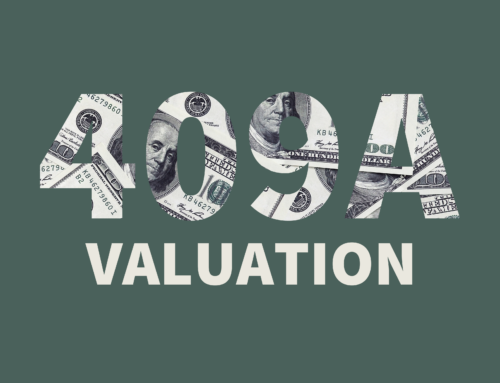VALUATIONS FOR FINANCIAL STATEMENTS
Perhaps you read our Valuation 101 intro post and thought to yourself “wow, I wish they had talked even more about valuation under GAAP!” If so, today is your lucky day! If not, think of this post as a character-building exercise.
What is Fair Value Measurement, Again?
This is the valuation of assets and liabilities that’s required for public financial reporting purposes, as well as other GAAP-prepared financial statements, employee benefit plan reporting, and non-financial statement SEC reporting. This method, promulgated by the Financial Accounting Standards Board (FASB) under ASC 820, defines fair value as the price at which an asset would be sold (or a liability would be assumed) in an “orderly” transaction in the market as of the date of the measurement. To be considered “orderly,” a transaction must be an arms-length transaction that is not forced on either side (unlike a distressed sale).
Hierarchy of Inputs
Given that fair value measurement is trying to determine a “market” value, the standard sets out a hierarchy of inputs, with market data at the top of the pyramid. ASC 820 sets out three levels of allowable inputs, but requires increasing disclosures as you move down the hierarchy.
Level 1
The preferred approach is to use observable market data of identical assets (or liabilities) in active markets (Level 1). The most obvious example of this is prices of stock or commodities quoted on public markets, such as NYSE or the Chicago Mercantile Exchange (CME).
Level 1 inputs are easy to use, because they involve identical assets or liabilities. For that exact reason, however, they may be of limited use, particularly for companies whose value is in proprietary intellectual property.
Level 2
Non-quoted (that is, adjusted) prices that are still observable are a step below in the hierarchy. What are those, exactly? There are a number of inputs that fall under this level:
- Proxies for observable market prices – this may involve the use of a highly correlated metric to arrive at an adjusted price for the input. This is also known as a market-corroborated input.
- Active market comparables – if the assets or liabilities do not have an exact match traded in an active market, the quoted price for a similar asset or liability can be used.
- Non-active market comparable – if the asset or liability is identical or similar to that of one quoted in a non-active market (for example, a recent publicly-disclosed M&A transaction), the quoted price can be used.
- Other observable inputs – this category excludes quoted prices, but includes other factors like interest rates or yield curves that are quoted at regular intervals, credit spreads, or other directly or indirectly observable factors.
Level 3
Level 3 includes unobservable inputs (such as the company’s own internal data) and is the bottom level of the hierarchy. In many cases there may not be an active market for the asset or liability, or there may be no publicly available information about it. Level 3 inputs require additional disclosures, as they are less transparent and may not be corroborated by market transactions. While this level often relies on significant internal information, adjustments based on observable market conditions or quotes should be made when possible.
Approaches to Valuation
Input hierarchies are nice, but how do you actually value an asset, liability, or business? The standards outline three acceptable approaches to valuation: market-based, income-based, and cost-based. The preferable approach when valuing a company or a group of assets or liabilities is whichever one is able to maximize the Level 1 inputs, while minimizing use of the lower tier inputs.
Market Approach
The market approach is going to sound very familiar – it’s essentially what we saw earlier in the description of the Level 1 and Level 2 inputs. The market approach uses information from transactions in the market to form a valuation. Usually, this would involve analyzing transaction information from companies that closely match the target company: ideally the comparisons will be in a similar industry, possess similar assets and liabilities, and be a similar size and stage of growth or development. This approach may look different depending on the level of the available inputs, but it generally involves using financial multiples to allow for more direct comparison between companies that may vary in some way (such as revenues that are a factor of 10x higher). The selection of ratios to use depends on the industry and maturity of the company in question. Some of the more common financial ratios that are utilized for market comps include:
- Price to earnings (P/E)
- Enterprise value to earnings before interest, taxes, depreciation, and amortization (EV/EBITDA)
Comparables may look at similar public companies, private companies that have publicly available funding information, or companies whose acquisition details are publicly available (the latter is generally due to disclosure requirements by an SEC-registered acquirer). In most cases, it’s beneficial to have multiple comparables upon which to use to value the target. As is the case with other types of valuation (i.e., non-financial reporting), there is still a strong element of subjectivity: the valuation relies on judgment calls as to which metrics and inputs are most appropriate to use. Comparables need to account for differences in market conditions; an acquisition in the fall of 2021 looks very different from one in the summer of 2022. Adjustments to market comps are another area where the expertise and discretion of the valuation team are an important piece of the puzzle.
Income Approach
The income approach is simply discounted cash flows (DCF) analysis by another name. This uses the company’s current and projected future cash flows (both inflows and outflows) and discounts them to determine the present value. The cash flows may be for a discrete period or may be in perpetuity, depending on the nature of the valuation. Unlike the market approach, this approach most likely consists almost entirely of Level 3 inputs, as they are based on unobservable inputs (e.g., management’s assertions or the company’s past performance). In some cases, the use of similar companies’ historical growth rate could be used to justify the rates used by the target company.
The selection of the discount rate that is used to calculate the present value requires a subjective call. Interest rate modeling is a complex topic that can include dynamic term structure models, but for many companies, simple interest rates or weighted average cost of capital (WACC) are used. WACC is the company’s average after-tax cost of the capital that the company uses to operate – this includes debt, preferred stock, and common stock. Within this formula, additional judgment calls must be made with respect to calculating the cost of equity.
Cost Approach
The cost approach is generally used for fungible property, plant, and equipment (PPE) – physical assets that can be easily replaced. This approach uses the “replacement cost” of the assets as the basis of valuation; the reasoning behind this is that a rational market participant wouldn’t pay more than this value. Valuation of an asset using this approach takes into account improvements made to the asset, depreciation, and obsolescence.
Intellectual Property
Valuation of intellectual property (specifically IP that has been internally developed) for financial reporting purposes uses either the market or income approach, depending on the use of the IP. If the intellectual property is used to produce cash flows, such as through royalty payments or licensing, the income approach may be appropriate. If, however, the intellectual property is held for internal use (such as to provide a competitive advantage or for internal operations), it can be difficult to identify cash flows specifically related to this use; in this situation, the market approach is likely to be a better fit for calculating the valuation. Comparables may be for the company as a whole, or may be limited to specific intellectual property, such as a patent.
International Consideration
Note that while this post centers on accounting principles that are specific to US reporting, the international guidelines for valuations from the International Accounting Standards Board (IASB) covered under International Financial Reporting Standards (IFRS) 13 contain very similar provisions to those discussed here. As is often the case, however, there are important distinctions that need to be considered when addressing valuation of assets and liabilities for international purposes.







